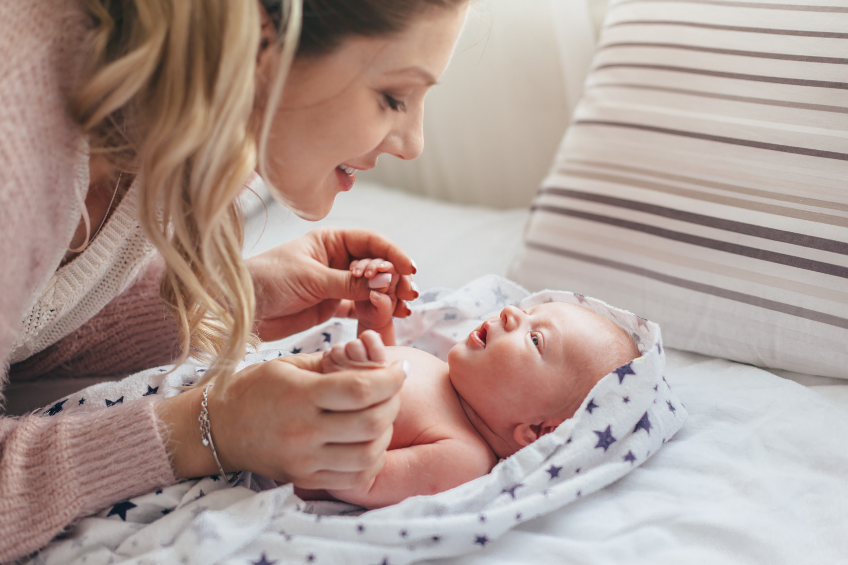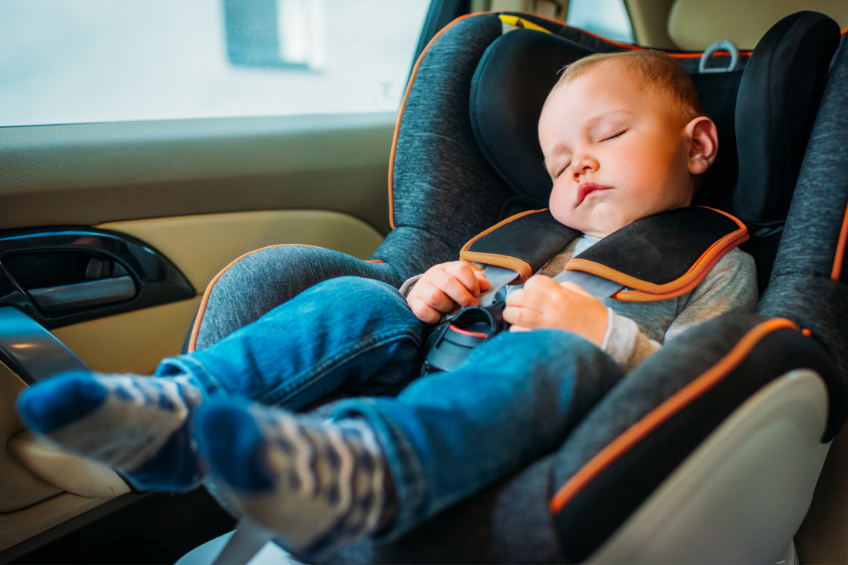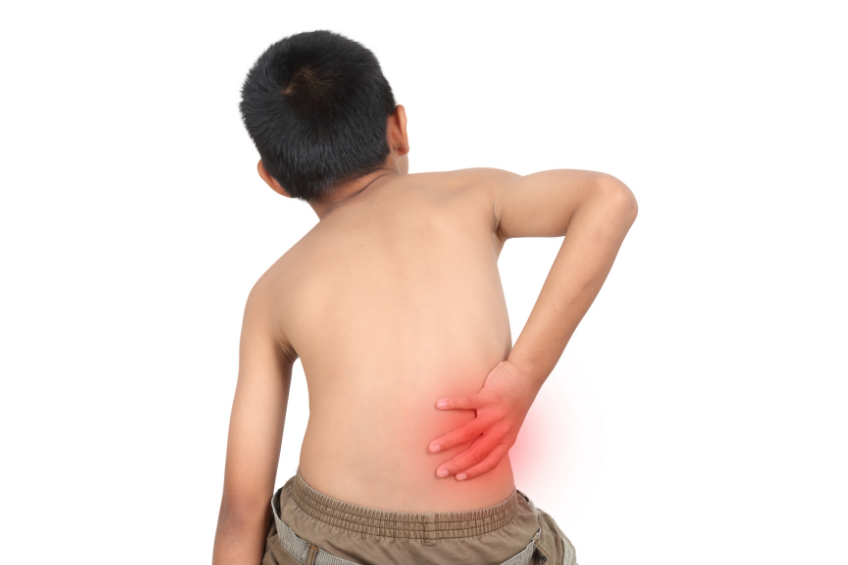Can Good Infant Spinal Care Prevent Scoliosis?
As new parents of a healthy infant you want to do all that is possible to keep your baby healthy and growing properly. When a new baby comes into this world normal, is discharged on time with a hearty weight number and seems to be thriving, you want to keep it that way. Making sure your baby is fed, bathed, cuddled and taken at regular intervals for its checkups and shots are some of the ways to keep that adorable bouncer flourishing. If you look at some preteens that you knew as infants you will be surprised to see their postures compromised. Some of them will suffer badly enough that they will have to be fitted with a type of spinal brace for scoliosis. The question that immediately comes to mind is, are there any preventive measures that can be taken to avoid spinal and back problems in your baby’s future?

Since the Back To Sleep campaign of the 1990’s babies are being put to sleep on their backs to avoid any suffocation while asleep. This is actually a good position to keep the baby’s spine aligned properly but there is a danger of flat head syndrome also known as plagiocephaly.
In order to prevent the issue of a flat head, experts not only advise but mandate that the baby must be kept in alternating positions during the day. For parents this means holding the baby or placing the baby on its stomach while awake for what has become known as, “tummy time”.
Ask most moms of babies one to three months old how successful their tummy time experience has been and unfortunately the majority of these moms don’t enjoy watching their babies suffer while trying to bob their heads up and down. Frequently the infant will just fall asleep on its stomach and as long as the mom is watching, the baby is allowed to sleep on its stomach. Moms will typically remark that the best naps their baby experiences is on its tummy. But back sleeping has unequivocally saved lives so there is no getting around it and if it would not be for the possibility of plagiocephaly, back sleeping would be great for the spine as well, as long as the mattress is firm. So, what other ideas can parents have to prevent flat head syndrome and still keep the spine in order?
As we are all aware the bones of an infant are flexible. This is a miraculous occurrence since otherwise it would be hard for the baby to come down the birth canal alive. The negative side of flexible bones is that parents must be careful not to jeopardize the spine causing curvature by using certain baby devices that can threaten the stability of the back.
With so many different baby gadgets around it can be hard for a parent to choose which ones to purchase and there are always new ones coming on the market. I was fascinated by a stroller which has been around for a while called the Doona which transforms from a car seat to a carriage with the flick of a switch. When the baby is sleeping in the car seat it is transported in the car seat and this transforms to a carriage without waking up the sleeping infant. Would a contraption like this be good or bad for the baby’s spine?

There are two systems that are developed first during the embryonic stage of infant development, the nervous system, and the spine. As the nervous system takes shape there are many different movements that the baby needs to move through. This continues even after the baby is born and no mom or dad would want to place their infant in a gadget that would hinder these developments. Let’s go through some current baby devices and see how they affect the flexible spine of the infant.
1) Rock N Play – This baby holder has been recalled because of fatalities during usage. Some parents may still have one in their home and even if used with supervision while not causing death will cause plagiocephaly and spinal trouble since when the baby is strapped in it lies in a position which is hard on the baby’s flexible spine.
2) Baby Carriers – There are two main types of baby carriers on the market, front or back holding. A proper carrier will have good back support and keep the baby’s knees above its hips . This position lets the thigh support the knee so there is less tension on the hips themselves. The preferred carrier that accomplishes this is the back carrier and if you would look at the baby on the back of its mom you would notice the feet are in an M position which is consistent with proper spinal comfort. The no-no would be a frontal carrier which is not only detrimental to the mother causing her to slump her shoulders but also keeps the baby’s legs dangling midair. Compare the back holder where the baby’s legs hold on to the mom and you will see that the baby is in a much better position for its spine.
3) Baby Jumpers & Seats –These will work fine as long as the baby is old enough for them, not necessarily what is written on the box as age appropriate. The time that a baby would be ready for a jumper or bouncer would only be when he or she is capable of sitting on their own. This means the back is strong enough to bear the weight of sitting on its own. Otherwise, these devices can cause stress on the joints and can possibly cause a delay in the baby learning to sit properly on its own accord. Be careful. Just because your baby’s back looks straight and strong enough to sit does not mean they are ready to go into a jumper, bouncer or Bumbo Floor Seat. Better to be conservative and wait till the baby actually sits up on its own.
To better understand what is meant by the baby being at the sitting stage let’s investigate what goes on in the infant’s spine development post birth. There are four main stages of spinal development in a person.
1) When the infant is born the spine constitutes forty percent of the total length of its body. Although this is the same ratio as an adult’s it will grow fifty percent more in length the very first year alone. The shape of the spine at birth is like the letter C. By three months the baby begins to raise its head and the curve reverses (called lordosis). At approximately six months the baby will sit and sometimes stand. This position is labeled, lumbar or lordotic. Sitting by itself takes a toll on the baby. At such a young age they are already using their spine, head, and core all while trying to balance simultaneously. Therefore, it is wise to wait to use jumpers and Bumbo Floor Seats until the baby can completely sit on its own.
2) From one year to five years the spine will continue to grow, reaching about 20.4 inches. Having a healthy history of spinal development will make it so much easier for the toddler to crawl, walk, and run easily and naturally. Falling is natural when first learning to walk but with a solid foundation of the back, the child should soon learn to balance correctly and fall less frequently.
3) From the age of five until ten the spine grows another four inches. This is the time to be on the lookout for any unnatural curvature of the spine or unevenness of the back.
4) From the age of puberty until eighteen the spine will usually grow another eight inches in boys and six inches for girls.
Spondylolisthesis is when there is too much stress on the lower back and when one of the vertebrates slips. Baby carriers that cause too much stress to the spine by weighing the baby down are a factor in the development of this preventable condition.
Final Words
When parents bring their baby home from the hospital they try and expect that all will go smoothly. They can’t help but be anxious to begin using all kinds of the latest baby accessories including car seats, Bumbo Floor Seat, baby carriers, swings, and jumpers. However, parents should be aware that their baby’s spine can be put into a perilous position with certain gadgets and if used too early before sitting properly. Always remember that any carrier that you use should be designed similarly to how you would hold the baby yourself. Never allow his or her legs to just dangle unaided rather they should be able to rest on your body or a footrest.

Sometimes scoliosis can develop regardless of any preventatives be it because of hereditary or other medical factors. At least as responsible parents of infants please make sure that you are not doing anything to aggravate this issue. As your child grows up, if you do notice a curvature even before your doctor, please have your child checked out at your local respected scoliosis center. Your child may only need to do some exercises to strengthen and straighten his or her spine or if needed be fitted with a comfortable brace for a limited amount of time.


